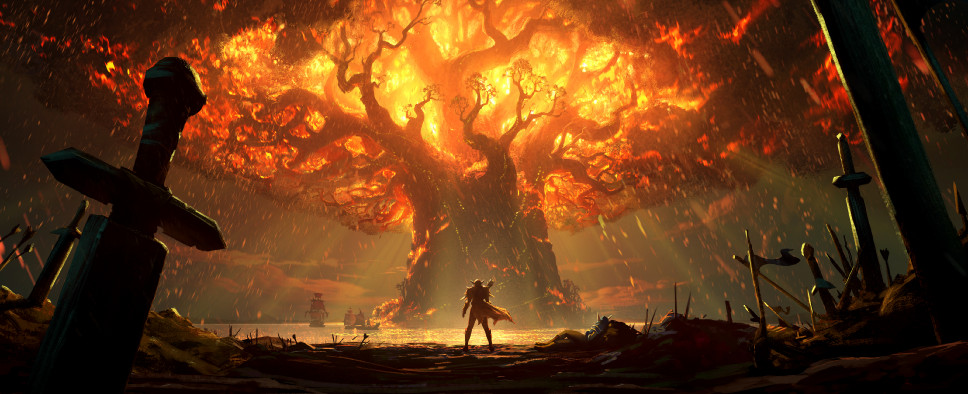World of Warcraft: Battle for Azeroth - Visions of N’Zoth Update Live
-
Category: News ArchiveHits: 812

Visions of N’Zoth, the last big content update for World of Warcraft’s Battle for Azeroth expansion, is now live, offering plenty of fresh activities, a couple of new allied races, and a bunch of new features. The link above can direct you towards detailed overviews for these new and revamped features, and here’s an introductory trailer:
Then, you should check this detailed PC Gamer interview with World of Warcraft’s senior game designer Jeremy Feasel, where he talks about the new update and its overarching goals. An excerpt:
Visions of N'Zoth, however, overloads players with choices in how best to tailor their character. A new legendary cloak, for example, can be empowered using resources found within Horrific Visions. And players who hate Titanforging—the system that would randomly boost the overall power of a piece of gear—will be happy to see it replaced entirely. Now, players have a chance to find Corrupted gear, which offers more powerful rewards but has nasty side effects, like being randomly attacked by interdimensional monsters, if you wear too many pieces. It's up to you if the extra power is worth the potential risk, as Corrupted gear can be cleansed, making it a normal piece of armor. Combined with changes made in the previous patch, World of Warcraft is beginning to feel like a proper RPG again.
"We throw a lot of these awesome overlapping systems at you just bam, bam, bam," Feasel laughs. "You're gonna feel like your character grows in both in power and in gameplay. But N'Zoth is also assaulting these zones, so there's a lot of things to also throw your character against. You're going to find that they're pretty powerful creatures out there, so even though you've got all this power, you can able to challenge yourself as well."
Of course, the real challenge is going to be the new 12-boss raid—the biggest raid in World of Warcraft since Hellfire Citadel over four years ago. Here, players will use their new Legendary cloak, and powerful Corrupted gear to enter Ny'alotha, the Waking City and take the fight directly to N'Zoth himself, though no one knows what will happen once he's (presumably) defeated or how that will tie into the events of Shadowlands when it releases later this summer.
And with this being the last bit of new Warcraft content before the upcoming Shadowlands expansion goes live, you may also be interested in this IGN retrospective that takes a look back at the series’ rich history. A sample:
“Warcraft III was where everything came together,” Samwise tells me. “The story, art, movies, hell - even the art in the manual, really pushed our game to 111. We came up with the franchise’s biggest characters in Warcraft III: Jaina, Illidan, Thrall and Arthas, and dozens more. Almost every character in World of Warcraft was based and modelled after something we created in Warcraft III and when World of Warcraft came out, it only got better.”
“It was originally a hero-controlled game,” Chris says, talking about the earliest moments developing Warcraft III. “You could only control your hero, and the units you had around it were selected only if you had vision of them. It was a very different game. It wasn't working out, but it gave this differentiator for Warcraft III that we wanted, which was something that played very differently than the units-swarming you got from StarCraft. Hero-centric, level up, have items, consume them, go into different buildings and then focus on a few smaller armies. We called it RPS (Role Playing Strategy).”
This new direction saw an explosion of lore and gameplay come together, from the introduction of 16 or so playable races, to the simplification of base building to incorporate more story and role-playing character progression. Warcraft III would ultimately see this vision move back towards more traditional RTS mechanics, with the playable races cut down to eight and then four, but its focus on hero abilities and a central character remained.
“It was a complete revamp at that point,” Chris confirms. “We basically went back to the drawing board, but the element of having this hero character was something the team was very fond of. That hero-centric play felt like the big innovation for us.”

